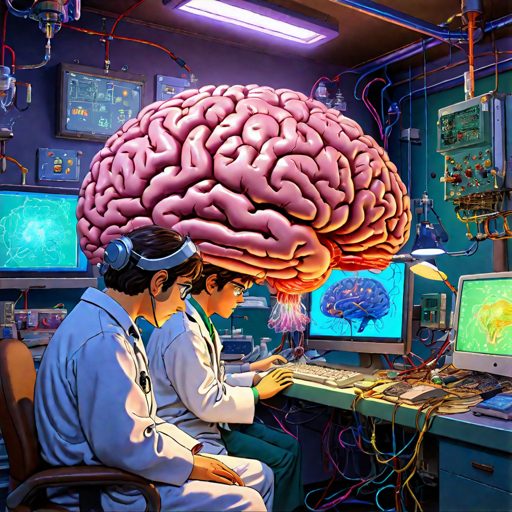
Artificial Neural Networks: Next-Gen Brain-Computer
Recommended for Bioengineering
Hey, what’s up, everyone? Today, we’re diving into something super interesting – it’s like a fusion of sci-fi and reality! Imagine a world where computers think and process like our brains. Sounds wild, right?
Well, that’s exactly what some brainy scientists are working on. This is not your usual tech talk; it’s about something called “Artificial Neural Networks,” and trust us, even Elon Musk would be amazed by this recipe of science!
Listen to the news
Key Facts:
-
Brain-Inspired Computers
- So, let’s break it down in simple terms. You know how your brain has a gazillion neurons all talking to each other? That’s kind of what an artificial neural network is, but with silicon chips instead of neurons. These networks are the backbone of Artificial Intelligence (AI), helping computers to think and learn.
- Now, these researchers have gone one step further. They’ve taken actual brain-like tissue and mashed it up with electronics to create what they call an ‘organoid neural network’. It’s a bit like making a mini-brain and then hooking it up to a computer. The result? A system that can recognize voices and even solve complex math problems!
- The team behind this is a mix of brainiacs from Indiana University, University of Cincinnati, Cincinnati Children’s Hospital Medical Centre, and the University of Florida. Their work was showcased in December, and it’s shaking up both science and engineering.
- Here’s where it gets even more interesting. Traditional AI struggles with something called the “memory and processing separation.” Basically, AI brains need to shuffle information back and forth between memory and processing units, which can be slow and energy-consuming. But our human brains don’t work like that. We process and store information in the same place, making us super efficient.
-
Brain-Inspired Computing
- To mimic this efficiency, scientists have tried creating neuromorphic chips with some short-term memory. They’ve been used in cool stuff like computer vision and speech recognition. However, there’s room for improvement, especially in dealing with unpredictable situations and saving energy.
- Enter the organoid neural network. These researchers used brain organoids – tiny 3D bundles of brain cells – and connected them to a network of microelectrodes. These organoids include various types of brain cells, like neuron progenitor cells, mature neurons, and astrocytes (the brain’s support crew).
- The whole setup is called a reservoir computer. It has three parts: the input (where it gets data), the reservoir (the organoid neural network where the magic happens), and the output (where we get the results). The team named their system ‘Brainoware’.
- Now, for the real showstopper: Brainoware’s abilities. It could predict complex mathematical patterns and even recognize spoken Japanese vowels with impressive accuracy. And it did all this with significantly less training than traditional AI needs.
Reflection:
In conclusion, this is more than just a tech breakthrough; it’s a peek into the future of computing and AI. While Brainoware still has limitations, like the need for expert handling and its diverse mix of cell types, it’s a solid start. This research is not only about making smarter machines; it’s about understanding learning, neural development, and even neurodegenerative diseases.
But with great power comes great responsibility, right? This brings us to some ethical questions. For instance, should we treat these organoids with the same respect as the donors of their cells? Are they conscious? These are tough questions without easy answers.
In the end, as Dr. Hartung says, this study is an “innovative and exciting proof-of-concept” of what can be achieved when we combine the human brain with technology. It’s a blend of nature and machine, and who knows? Maybe one day, these organoid neural networks will change the way we think about computing and intelligence.
So, there you have it, folks – a glimpse into a future where our computers might just be a little bit brainier. Stay tuned, because the world of AI and neural networks is just getting started!
Similar Stories
Curious Times is a leading newspaper and website for kids. We publish daily global news aligned to your learning levels (also as per NEP 2020): Foundational, Preparatory (Primary), Middle and Senior. So, check out the News tab for this. We bring kids’ favourite Curious Times Weekly newspaper every weekend with top news, feature stories and kids’ contributions. Check out daily JokesPoke, Tongue Twisters, Word of the Day and Quote of the Day, kids need it all the time.
ME – My Expressions at Curious Times is your place to get your work published, building your quality digital footprint. And it is a good way to share your talent and skills with your friends, family, school, teachers and the world. Thus, as you will step into higher educational institutes your published content will showcase your strength.
Events, Quizzes and Competitions bring students from over 5,000 schools globally to participate in the 21st-Century themes. Here schools and students win certificates, prizes and recognition through these global events.
Sign-up for your school for FREE!
Communicate with us: WhatsApp, Instagram, Facebook, Youtube, Twitter, and LinkedIn.
0 (Please login to give a Curious Clap to your friend.)
